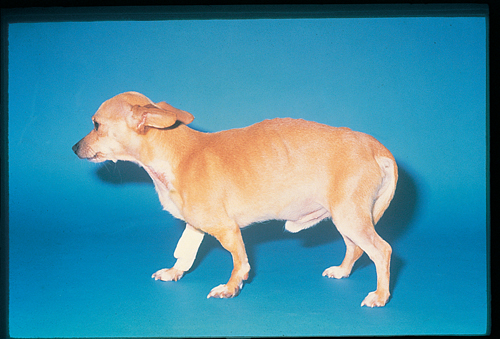Small Animal Emergency and Critical Care Medicine Q&A 10
| This question was provided by Manson Publishing as part of the OVAL Project. See more Small Animal Emergency and Critical Care Medicine Q&A. |
This eight-year-old, intact male Chihuahua has a stiff, stilted gait, caudal abdominal pain and a bloody discharge dripping from the penis. He has a fever of 105°F (40.6°C) and has not eaten for 2 days. He tries to bite during rectal palpation.
| Question | Answer | Article | |
| What is your presumptive diagnosis? | Acute bacterial prostatitis. |
Link to Article | |
| How can the diagnosis be confirmed? | Physical examination reveals an enlarged, painful prostate gland. Hematology shows a neutrophilic leukocytosis with a left shift. Urinalysis usually shows RBCs, WBCs and bacteria in the urine. The diagnosis can be confirmed by culture and cytology of prostatic fluid, but ejaculation or prostatic wash may not be possible in dogs with extreme pain. Culture of the urine by cystocentesis is usually adequate to identify the organism. Radiography and ultrasonography are helpful in diagnosing prostatic abscesses. |
Link to Article | |
| What are your treatment recommendations? | Treatment involves antibiotic therapy and supportive care with i/v fluids. Recommended antibiotics include erythromycin, clindamycin, trimethoprim-sulfa, chloramphenicol and the quinolones. Antibiotics should be continued for at least 21 days, or for 6–8 weeks for prostatic abscesses. Cessation of antibiotic therapy should be followed by negative culture. Castration is recommended to reduce prostatic tissue mass. Surgical drainage, in addition to antibiotic therapy and castration, is recommended for prostatic abscesses. Septic shock may occur if a prostatic abscess ruptures, requiring exploratory laparotomy, abdominal lavage and open peritoneal drainage as treatment for acute fulminant peritonitis. |
Link to Article | |
